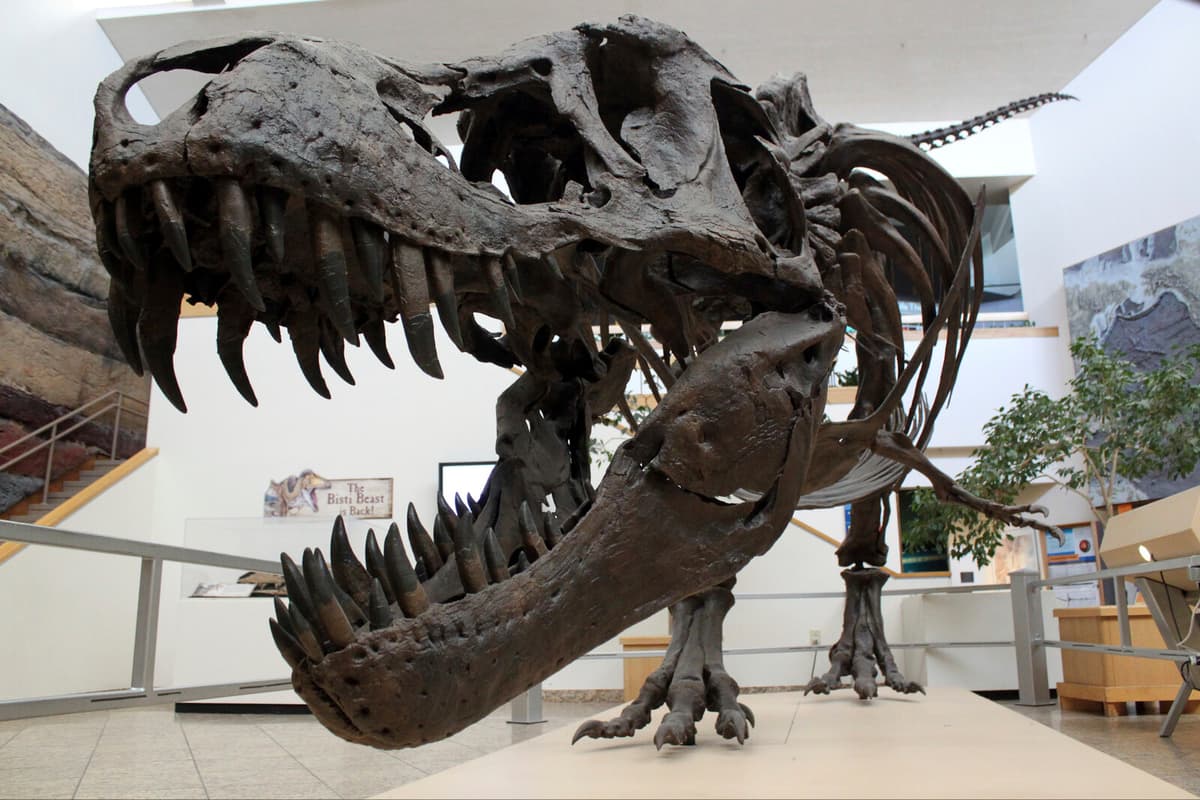The carnivorous dinosaurs, or theropods, consisted of both small, medium-sized and very large species.
In the study, which is published in the scientific journal Current Biology, the researchers Andre Rowe and Emily Rayfield at the University of Bristol in the United Kingdom have measured the bite force of some of the very large species. Among the species studied were Acrocanthosaurus, which weighed about 5.6 tons, Spinosaurus, whose weight has been estimated at 8 tons, and Tyrannosaurus, with a weight of 9.5 tons.
Slender skull
All these beasts were bipedal and had a similar body shape, but they differed significantly in terms of the structure of the head. While, for example, the well-known Allosaurus had a large, but slender and lightweight skull, T-rex had a massive, compact head with large attachments for powerful jaw muscles. It is evident that they hunted and killed their prey in different ways.
Rowe and Rayfield examined the skulls using 3D technology, including computer tomography, and thus obtained measurements of bite force and skull mechanics. The results were surprising; the differences between the species were greater than anyone had thought.
While the tyrannosaurids, T-rex and its close relatives, had skulls that were optimized for bite force, the allosaurids, such as the enormous Carcharodontosaurus, had a – relatively speaking – weak bite. The bite force of T-rex was around 60,000 newton, while Carcharodontosaurus, which was the same size, had a bite force of around 25,000 newton.
Newton is the unit used in such contexts – for comparison, it can be mentioned that a lion's bite force is 1,768 newton.
Teeth like knives
There were other differences between the species, such as the appearance of the teeth. Tyrannosaurus had relatively robust teeth, while the allosaurids had narrower and sharper teeth. Probably, Tyrannosaurus crushed the bones and muscles of its prey with a massive bite. Carcharodontosaurus and Allosaurus are believed to have used their teeth as sharp knives – with a few bites, they caused severe bleeding in their victims.
According to the researchers, the large differences between the species indicate that the carnivorous dinosaurs had widely different lifestyles, with less competition and more specialization as a result.
Roland Johansson/TT
Facts: Carnivorous dinosaurs
TT
The carnivorous dinosaurs, Theropoda, were a diverse group among the dinosaurs with a long history.
The first representatives lived over 230 million years ago. The last ones died out about 66 million years ago.
They grew large in the middle of the Jurassic period, about 170 million years ago, and then developed a range of species that were the largest predators that have existed on Earth.
Among the largest can be mentioned Tyrannosaurus, Tarbosaurus, Carcharodontosaurus, Giganotosaurus, and Spinosaurus. All of these weighed between 6 and 10 tons. Probably, many of them had feathers on their bodies.





